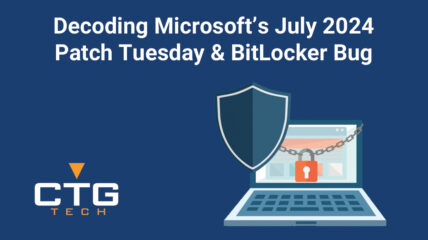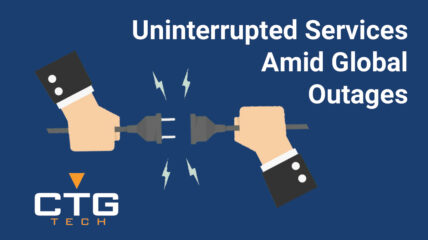Online Ads Can be Dangerous for Cybersecurity: The Threat’s Called Malvertisement
Imagine you’re browsing a reputable website and you come across an online advertisement. If the ad content appeals to you, you wouldn’t think twice before clicking on the ad now would you? But do you know that this seemingly credible ad could actually be a malicious advertisement with the intent to infect your system with a malware? That’s what malvertising is all about, using online advertisements as a way to spread malware. No website is completely safe from malvertising, even the big names such as Spotify, the New York Times Online, Reuters, Yahoo, the London Stock Exchange, etc. have suffered from this issue. So even the websites that you tend to visit on a regular basis may feature a malvertisement.
Let’s Explore More Deeply the Working Mechanism of Malvertising
To understand malvertising, you first need to understand what an advertising network is. An ad network is a kind of a middleman that is responsible for connecting businesses interested in publishing ads with the websites interested in hosting ads. There are numerous advertising networks today of varying sizes. These networks receive several advertisements daily, which means not each of these submitted ads can be comprehensively checked for wrongdoing. As a result, it becomes easy for attackers to slip an advertisement into the network, which although looks very much legit, but in fact resides malicious code hidden within it ready for distribution across the Internet.
As a user, it’s almost impossible for you to spot a malvertisement because it looks like every other ad that you see on the Internet. The biggest trouble with malvertisements is that they can affect the users in two ways: when the users click on the malicious advertisement or even when users are just viewing the web page containing the malicious advertisement without clicking on the ad.
The malvertisements usually appear on the web page in the form of popups, banners, or alerts. The content of these ads could be relevant to what you’re searching for or interested in, thus prompting you to click on the ad to find out more. When you do unknowingly click on a malvertisement, it could kickstart the execution of a code which ultimately leads to the installation of a malware on your device.
What about when you haven’t clicked on the advertisement? Well, you’re not out of danger even then. Your device could still be affected by the malvertisement through drive-by download mechanism as soon as the web page is displayed.
Regardless of whether you click on the malvertisement or just load the web page containing the malvertisement, the process that follows next typically goes like this. You are led to a malicious server which is under the control of cyber criminals. The server features a malware known as an exploit kit. The job of an exploit kit is to assess the user’s system and figure out any vulnerability that can be misused to inject a malware into the system.
What If You’re a Business Whose Website is Displaying Malvertisements to Users
If a user encounters a malvertisement when browsing your website, then that’s going to reflect poorly on you. For the user, it’s difficult to understand the complex background process involved. They might simply assume that it was when visiting your website that their system was infected with a malware. You can only imagine what a havoc such an assumption could wreak on your online reputation, severely hampering your growth as a result.
Despite the risks that malvertisements pose to your website reputation, there’s little you can do about them. The ads that are displayed on your website are chosen dynamically from among millions on the basis of real-time bidding. Because what ads are shown to the users is such an unpredictable event, it would be a mighty difficult task to test, identify, and prevent the malvertisements from getting displayed.
However, there are certain measures that you could take to ensure at least somewhat prevention of malvertisements on your website. Make it a point to work with ad networks that offer high security and ensure proper ad delivery paths. You can be more selective about the type of ads that you want to display on your website, selecting only a couple of market domains that are directly relevant to your business. Also, you could use an unpatched system to check your website from time to time, for catching any malvertisements in action.
What Measures Can Users Take for Protection Against Malvertisements?
Following are certain preventive measures that can be taken on the user side:
- Installing a powerful anti-virus software that provides a good degree of protection against the harmful code present in the malvertisements. Keeping the anti-virus software updated is also essential.
- Making sure that the browsers being used for Internet browsing are up-to-date, since security vulnerabilities in old versions of the browsers could also provide a point of entry for the attack.
- Using an ad blocker can be really useful in avoiding the malvertisements.
- Managing your browser plugins more carefully, with particular attention to the Flash and Java plugins. Uninstalling any unnecessary plugins that are almost never used is a good place to start.
- For the plugins that are kept on in the browser, ensuring that they are updated security-wise is important. Also, click-to-play mode should be enabled for them so that they only run when user permits them to. Malvertisements often target plugins as a means to attack the system.
Businesses need to take special care to make sure that their employees do not become victims of malvertisements while surfing the Internet. A malware installation on any employee’s system can cause a major blowback to the information security of the business. This is why they should hire a managed security services vendor who can ensure compliance with above as well as other advanced security measures for protection against malicious ads.




